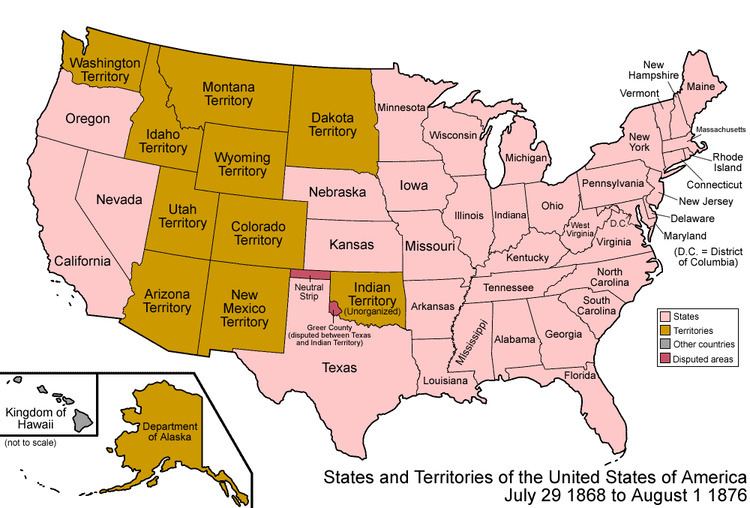 | ||
Organized incorporated territories are territories of the United States that are both incorporated (part of the United States proper) and organized (having an organized government authorized by an Organic Act passed by the U.S. Congress, usually consisting of a territorial legislature, territorial governor, and a basic judicial system). There have been no such territories since Alaska and Hawaii were admitted as states in 1959.
Contents
Through most of U.S. history, regions that were admitted as U.S. states were, prior to admission, territories or parts of territories of this kind. As the United States grew, the most populous parts of the organized territory would achieve statehood. The remainder frequently kept at least some of the governing structure of the old legal entity (territory) and would be renamed to avoid confusion.
Some territories existed only a short time before becoming states, while others remained territories for decades. The shortest-lived was Alabama Territory at two years, while New Mexico Territory and Hawaii Territory both lasted more than 50 years.
Historical
Of the current 50 US states, 31 were at one time or another part of a U.S. territory (see list below). The exceptions include: the original Thirteen Colonies; Kentucky and West Virginia (both split off from Virginia); Maine (split off from Massachusetts); California (created as a state out of the unorganized territory of the Mexican Cession); and Vermont and Texas (both previously self-declared republics).
Common regional names such as Louisiana Purchase, Indian Territory, and Oregon Country were never formally organized as territories.
During the American Civil War, there was (at least nominally) a Confederate-established Arizona Territory (1861–1865), which split Arizona and New Mexico along an east-west line, rather than the Union-established north-south line that persists today. See article for map.
Current situation
Since 1959, there have been no incorporated U.S. territories formally organized by an Organic Act. All current U.S. territories except Palmyra Atoll are unincorporated (meaning that they are not fully part of the United States and that all aspects of the United States Constitution do not automatically apply), whereas other former incorporated territories are now states. While the District of Columbia functions similarly to an organized incorporated territory, it is governed by entirely different provisions of the United States Constitution as a federal district.
List of organized incorporated territories
The following territories within the United States were officially organized by Congress with an Organic Act on the first date listed. Each was admitted as a US state (of the same name, except where noted) on the second date listed. Often, larger outlying portions of an organized territory were not included in the new state.
For maps, see Territorial evolution of the United States.
